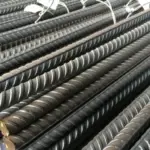When you first hear the term 12-volt linear actuator, it might sound like something straight out of a technical manual. But in reality, it’s just a small device that quietly moves things in a straight line — no spinning, no fuss, just simple back-and-forth motion. And believe it or not, this little tool is playing a big role in modern engineering projects.

A linear actuator 12 volt works a bit like a robot arm that pushes or pulls with surprising strength. You’ll find them tucked inside adjustable desks, opening secret compartments, lifting solar panels, or automating windows and gates. They’re compact, easy to install, and safe to use, even for beginners. And the best part? They don’t make a scene, they just get the job done, quietly and efficiently.
Whether you’re an engineer working on a smart farming solution or a hobbyist automating your camper van setup, these actuators are becoming the go-to solution for movement without complexity.
Why 12 Volts? The Sweet Spot for Engineers
There’s a reason why 12-volt systems are a favorite among engineers, makers, and DIYers alike, they hit the perfect balance between power and practicality. A 12V linear actuator is strong enough to handle serious tasks but low enough in voltage to be safe to work with, even for beginners. You don’t need heavy-duty protection, certifications, or specialized equipment to use them. Just plug them into a battery or a basic power supply, and you’re good to go.
Unlike high-voltage systems that often require extra insulation, safety procedures, and sometimes even government regulations, 12V systems are considered low-voltage and much easier to manage. This makes them ideal for smaller-scale builds, mobile applications, or anything where simplicity and portability matter.
Compatibility is another big win. Most cars, solar setups, and portable power stations run on 12V, so you can easily integrate an actuator without needing complicated converters. It’s flexible, cost-effective, and gets the job done with minimal hassle.
In short, 12 volts is the sweet spot: safe enough for anyone to use, powerful enough for most applications, and versatile enough to fit into nearly any kind of project, no matter if it is big or small.
Where 12 Volt Linear Actuators are Making a Difference: Real-World Use Cases
Like Us on Facebook!
You don’t have to look far to see 12V linear actuators in action—they’re quietly powering all kinds of clever solutions across industries. From smart homes to smart farms, these compact devices are helping people build things that move with precision and ease.
Subscribe Us on YouTube!
Modern Home Automation
Let’s start at home. Ever seen a kitchen cabinet that opens with just a light tap? That’s likely a linear actuator at work. These small mechanisms are a favorite in modern home automation systems. Adjustable desks? Actuators help raise or lower them at the push of a button. Motorized windows that open to let in a breeze, then close when it rains? Yep, actuators again.
They’re especially popular in smart furniture, think hidden TV lifts, automated storage solutions, or even transforming beds. Whether it’s comfort, convenience, or just adding that “wow” factor to a space, these devices make movement smooth and effortless.
Automotive Linear Actuator Projects
Car and van mods are another huge space where 12V actuators shine. They’re ideal for low-voltage vehicle systems and open up a world of DIY creativity. One popular use? Lifting truck beds or tailgates with a remote control. No more heavy lifting, just press a button and let the actuator handle it.
In the van life and camper community, actuators are a must-have. Travelers use them to raise pop-up roofs, create expandable storage compartments, or even build foldable sleeping platforms that tuck away during the day. One particularly clever mod involves hiding a license plate behind a bumper and revealing it only when needed — perfect for car shows or specialized vehicles.
Robotics & DIY Tech
Makers and hobbyists are also embracing actuators, especially when working with platforms like Arduino or Raspberry Pi. Why? Because actuators are much easier to integrate than more complex motor systems, especially for simple back-and-forth movements.
Want to build a robot arm that picks up small objects? A linear actuator can handle the lifting. Need a precise camera slider for filming or photography? Actuators allow for smooth, programmable motion without the bulk or cost of larger motors.
Even in 3D-printed robot builds, actuators provide just the right combination of strength and control. It’s no surprise they’re becoming a go-to solution in the maker world.
Agriculture & Farming
And finally, there’s the growing field of agri-tech. Farmers are always looking for ways to make daily tasks more efficient, especially in large-scale or remote operations. Linear actuators are showing up in automated greenhouse systems—opening and closing vents based on temperature, adjusting grow lights, or even managing irrigation setups.
One farmer shared how he replaced manual levers with 12V actuators to open the greenhouse roof automatically when the inside temperature got too high. No more running back and forth to check the thermometer—just a simple sensor and actuator setup, and the system handles the rest.
Simple to Use, Affordable to Build With
One of the best things about 12V linear actuators is how beginner-friendly they are. You don’t need to be an engineer to make them work, just a toggle switch, a remote, or a basic microcontroller like Arduino or Raspberry Pi can get you started. Many kits come plug-and-play, so even first-time users can jump in without a steep learning curve.
They’re also easy on the wallet. These actuators offer real mechanical power at a low cost, making them perfect for students, hobbyists, or small startups. And because they run on low voltage, they consume minimal energy — great for battery-powered projects. Whether you’re automating a drawer or prototyping your next big idea, these small tools deliver big results without breaking the bank.
Thanks to their simplicity and adaptability, 12V linear actuators are now showing up across a wide range of actuator engineering uses – from home automation and robotics to automotive innovations and smart farming solutions.













